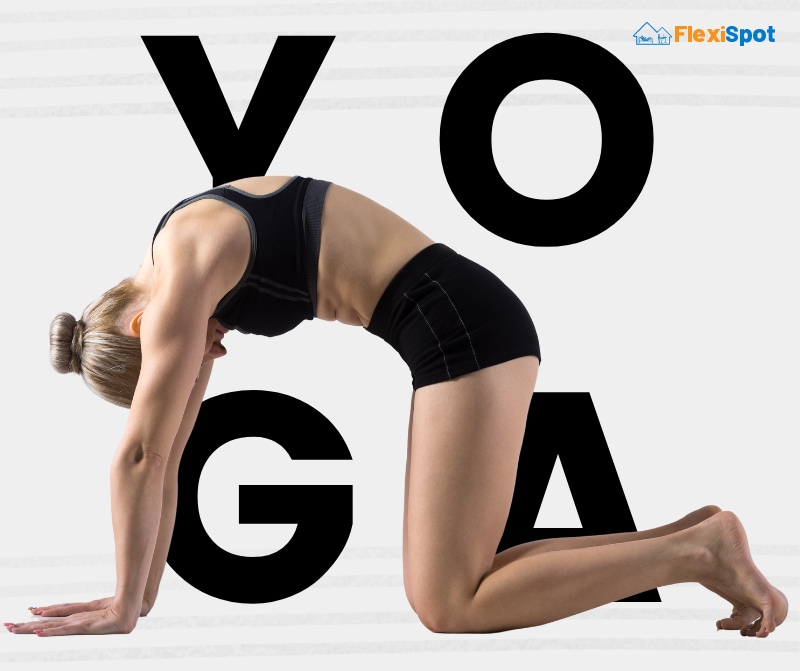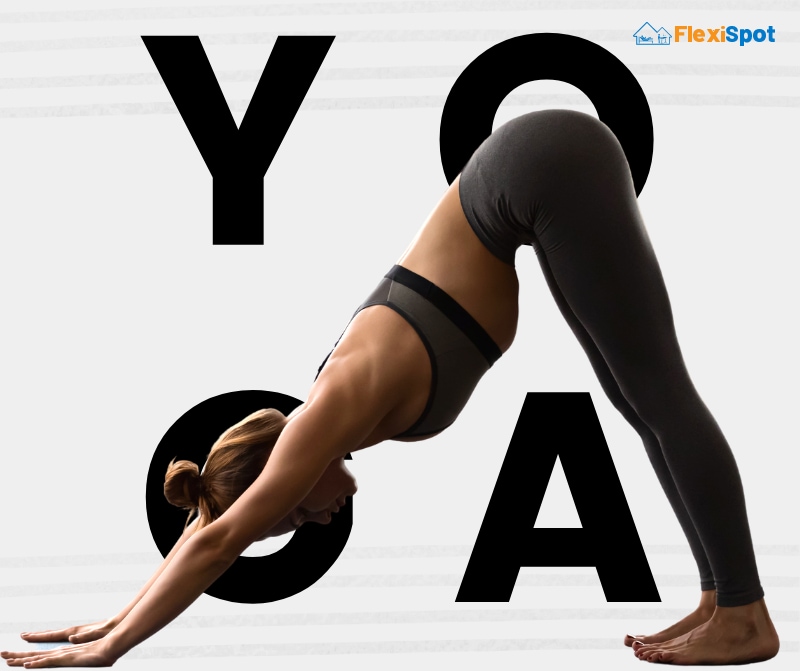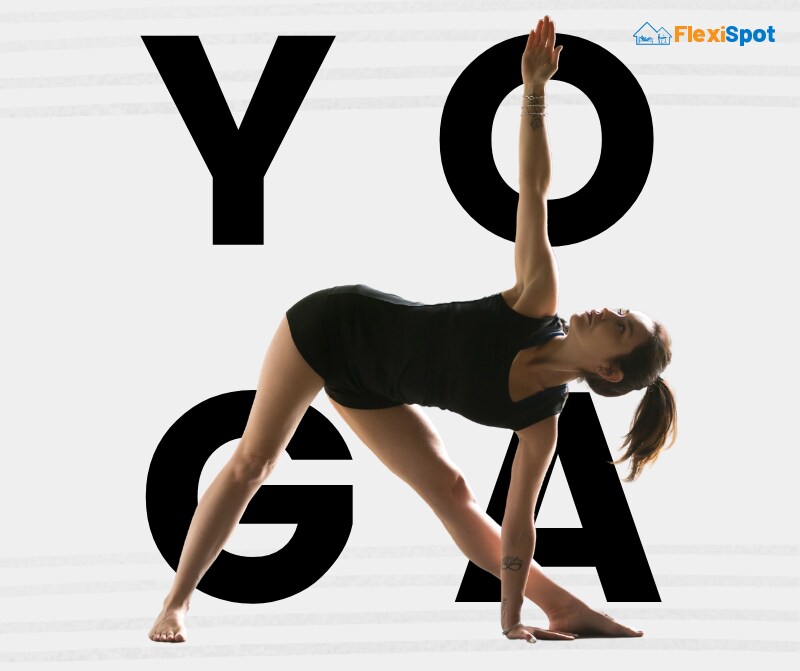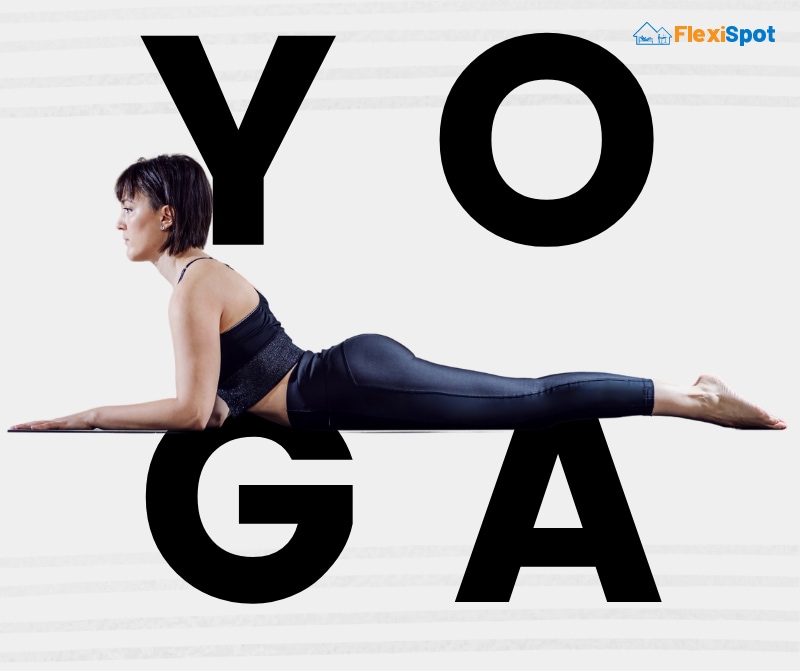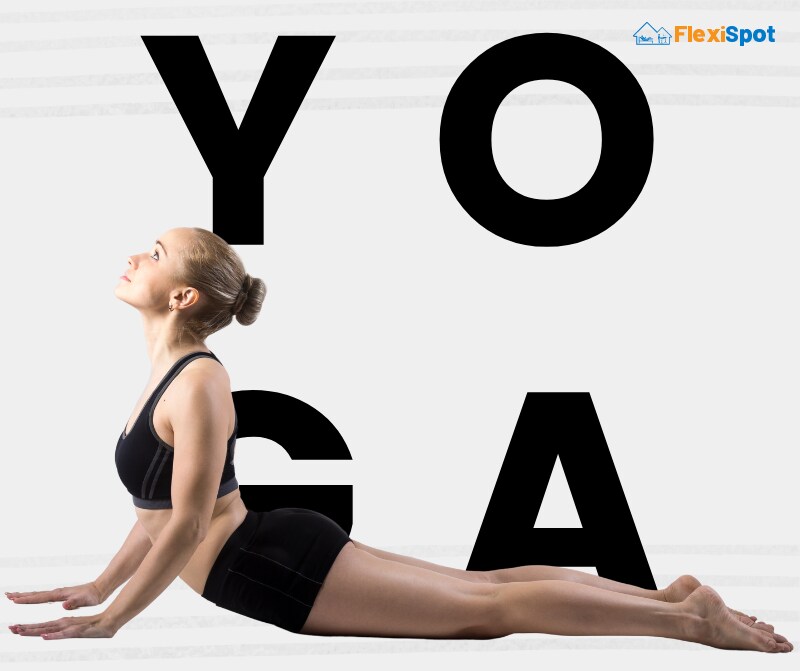For most people, the lower back is a sensitive spot. This is why doctors recommend yoga. Yoga is not only recommended to treat back pain but also the stress that comes with it. It is a mind-body therapy that helps strengthen and relax your body.
Even though there can be multiple reasons behind your back pain, the most common ones include poor posture from sitting for long periods during the day and a weak core. Together, these start to cause discomfort and lead to sharp back pain.
Practicing a few yoga poses every day for a couple of minutes can help you gain awareness of your body, as well as your surroundings. You will learn the spots where you hold the most tension and if you have any imbalances.
Here are some yoga poses for beginners to relieve back pain:
Cat-Cow
Cat-cow is a gentle yoga pose made up of backbend stretches that help mobilize the spine. This pose also targets the shoulders, neck, and torso.
The most common muscles worked when performing this pose include:
Triceps
Serratus anterior
Rectus abdominis
Gluteus maximus
Erector spinae
Here is how to do the cat-cow:
Put a mat on the floor and get on all fours.
Put your wrists below your shoulders and ensure that your knees are perpendicular to your hips.
Make sure that your weight is balanced on all fours.
As you look up, inhale and allow your stomach to fall slightly to the mat. Arch your back while doing this.
When you look down, tuck your chin neatly towards your chest and exhale. Gradually draw your core towards the spine and gently arch your back towards the ceiling.
As you go into this pose, feel every inch of your body.
Forget everything and try to let go of any tension in your body.
Practice the cat-cow for at least a minute.
Downward-Facing Dog
The downward-facing dog is a conventional forward bend that can be refreshing and calming. This pose provides great relief for back pain, as well as sciatic pain. It boosts strength in the body while allowing you to regain your balance.
The most common muscles worked when performing this pose include:
Triceps
Gluteus maximus
Quadriceps
Deltoids
Hamstrings
Here is how to perform the downward-facing dog:
Place a mat on the floor and position yourself on all floors.
Your hands need to be positioned while being aligned with your wrists, and your knees must be underneath your hips.
Put your weight on your hands, tuck the toes underneath, and slowly try to lift your knees.
Point your hip bones towards the ceiling.
Keep your knees slightly bent and lengthen your tailbone and spine.
Your heels need to be kept off the ground by an inch.
Make sure to press into your hands.
Allow your weight to fall evenly on both sides of the body. Pay special attention to your shoulder and hips.
Your head must be in line with your upper arms or with your chin.
Try holding this pose for 1 minute.
Extended Triangle
This standing posture is a classic that everyone must have done back in primary school. It helps relieve neck pain, sciatica, as well as back pain. The extended triangle stretches the hips, groin, and spine while strengthening the chest, legs, and shoulders. It helps alleviate anxiety and stress.
The most common muscles worked when performing this pose include:
Quadriceps
Gluteus maximus and medius
Hamstrings
Internal oblique
Latissimus dorsi
Here is how to perform the extended triangle:
Stand up and create a gap of 4 feet between each foot.
Your right toes need to face ahead, while your left toes need to be at an angle.
Gradually lift your arms so that they are parallel to the floor. Your arms must face downwards.
Tilt your body forward and pivot at your right hip. This will allow you to bend forward with your torso and arm.
Drop your hand to your leg or the floor. If you can’t reach either, use a yoga block as a guide.
Point your left arm to the ceiling and feel the stretch in your body.
Look down, up, or forward. For the ultimate stretch, try looking up.
Sphinx Pose
The sphinx pose is a backbend that stretches the buttocks and spine, along with the abdomen, shoulders, and chest. This pose is also known for relieving stress in the body.
The most common muscles worked when performing this pose include:
Trapezius
Pectoralis major
Erector spinae
Latissimus dorsi
Gluteal muscles
Here is how to perform the sphinx pose:
Place a mat on the floor and lie down flat on your stomach so that you can extend your legs behind you.
Keep the muscles in the buttocks, thighs, and lower back engaged.
Place your elbows underneath your shoulders so that your forearms are on the floor and your palms face downwards.
Keeping your muscles engaged, bring your upper torso and head off the floor.
Lift the lower abdominal muscles so that your back is supported.
Make sure that you are lifting your body from your spine rather than putting pressure on your lower back.
Look straight ahead and relax your body as you become comfortable in this pose. However, remember to remain engaged and active.
Try to stay in this pose for 5 minutes.
Cobra Pose
The cobra pose is a yoga pose for beginners to relieve back pain. It helps stretch the chest, shoulders, and abdomen. It helps strengthen the spine and alleviates sciatica pain. It also helps deal with the fatigue and stress that is usually accompanied by back pain.
The most common muscles worked when performing this pose include:
Serratus anterior
Deltoids
Hamstrings
Gluteus maximus
Triceps
Here is how to perform the cobra pose:
Place a mat on the floor and lie down flat on your stomach. Put your hand underneath your shoulders so that your fingers are facing forwards.
Pull your arms close to your chest. The elbows need to be tucked in so that they are not poking out.
Using your hands, carefully lift your chest, shoulders, and head.
Depending on your flexibility, you can lift yourself up halfway or all the way up.
Keep your elbows slightly bent.
If you want a deep stretch, let your head drop back. Feel the stretch in your neck.
When you exhale, slowly drop your back on the mat.
Put your arms to the side and relax your head.
Carefully sway your hips from side to side so that tension can be released from your lower back.
Changes to Make in Your Daily Life to Relieve Back Pain
Even though figuring out the cause of your back pain can be difficult, there are some things you can change in your everyday life to relieve pain. The key is to relieve pressure and reduce strain on your back by keeping your spine protected and muscles strong.
Here are some daily habits you can change to live a pain-free life:
Back-Friendly Furniture
Your furniture, especially the chairs you sit on, plays a significant role in determining your health. To ensure that you do not suffer from back pain, it is recommended to get an ergonomic office mesh chair that can support the shape of your back.
If you have a desk job and spend more than four hours on your chair, you should definitely invest in a chair with good lumbar support.
Change Your Shoes
You may not realize, but it is crucial to wear shoes that are low-heeled and comfortable. Your shoes can play a significant role in increasing the pain you feel in your lower back.
Getting comfortable shoes that suit the shape of your feet reduce the strain put on your back when you stand and walk. Buy shoes that are less than 1-inch tall. People with back pain should avoid wearing heels.
Fix Your Posture
A chair alone cannot fix your back pain. Having good posture is also important to support your back. If you work on a desk for several hours a day, make sure that you do not slump and that your laptop is on eye level.
Get a cushion for your office chair to support your lower back and make sure that your knees are higher than your hips while sitting. Do not underestimate the importance of good office posture as it plays a significant role in your back health.

